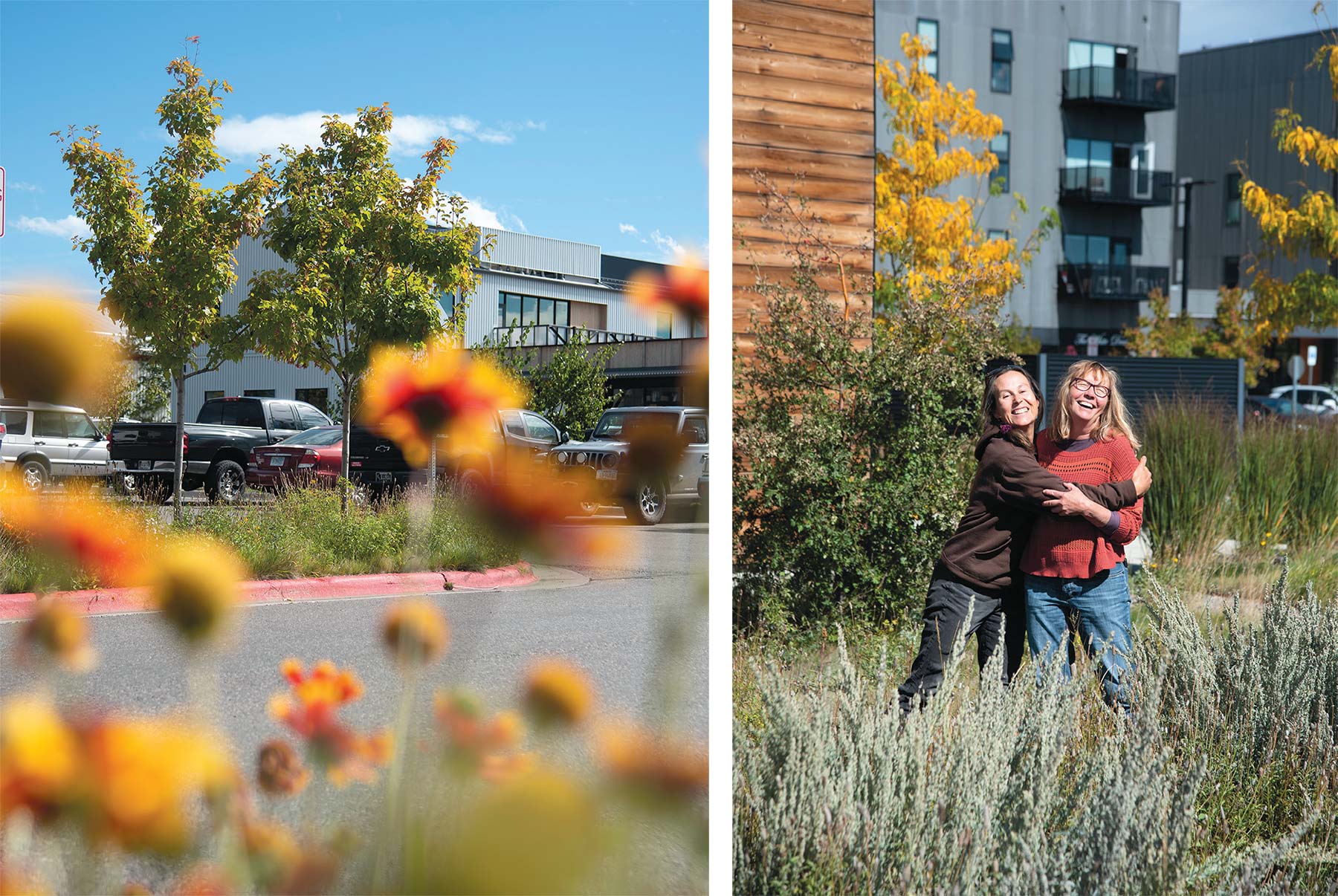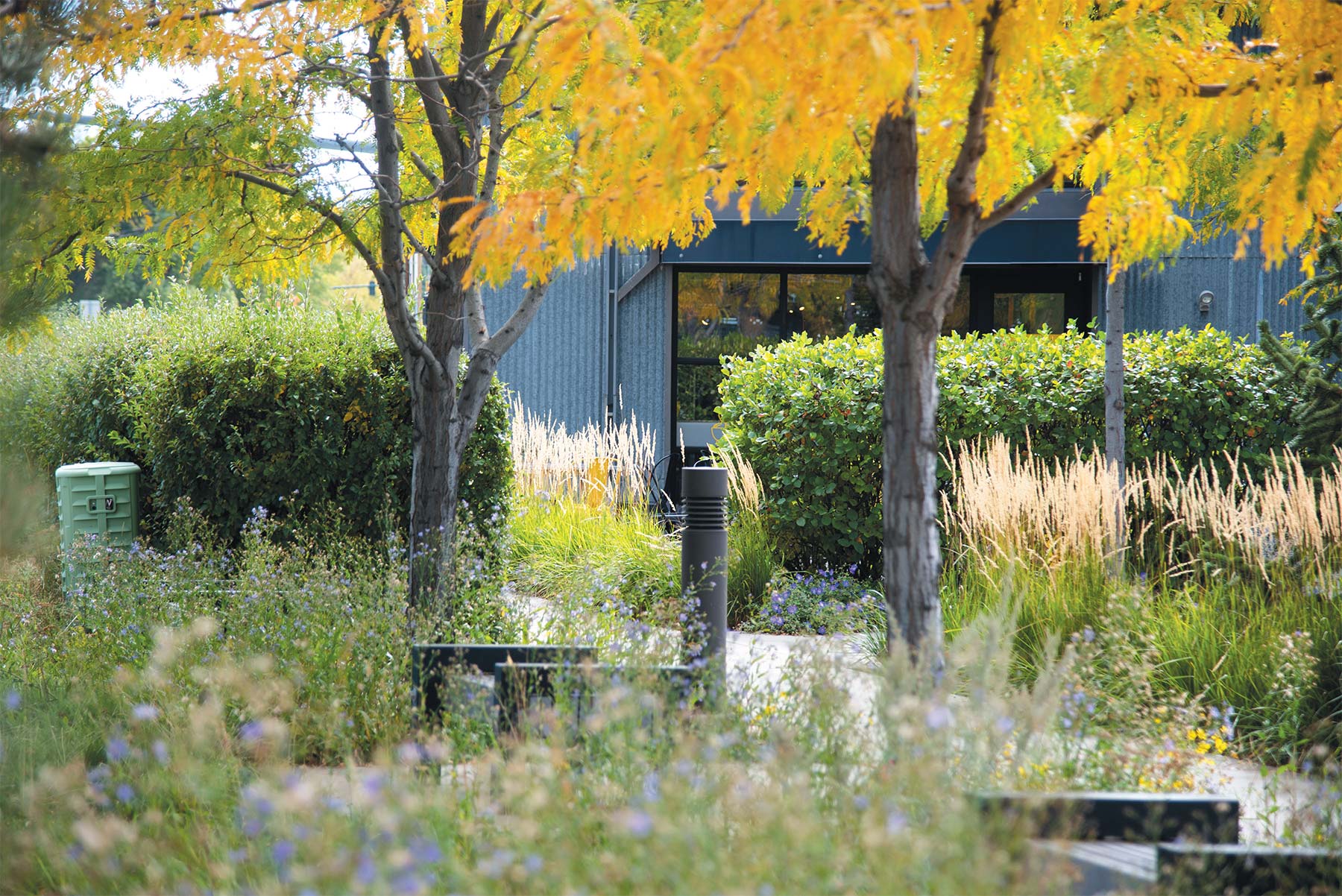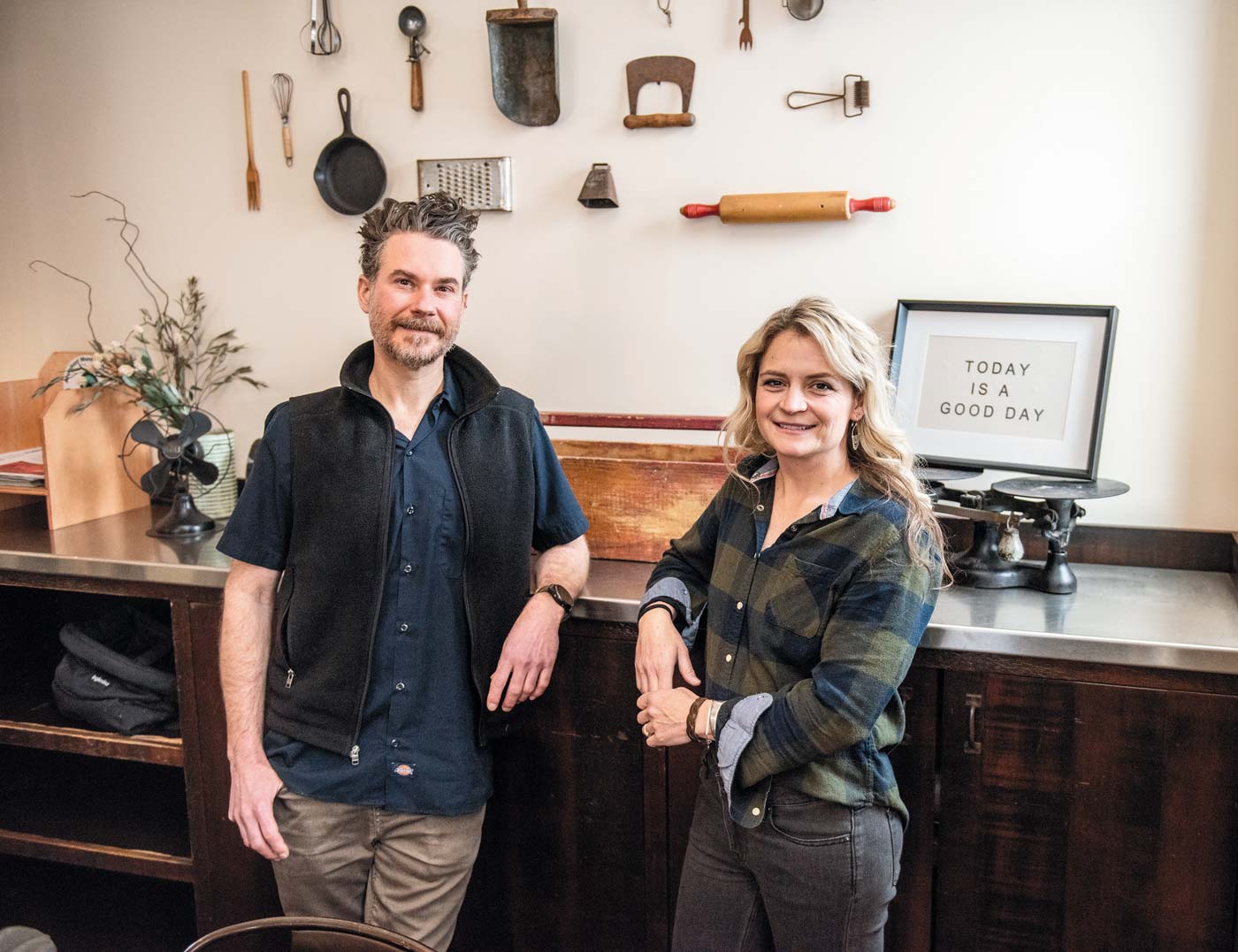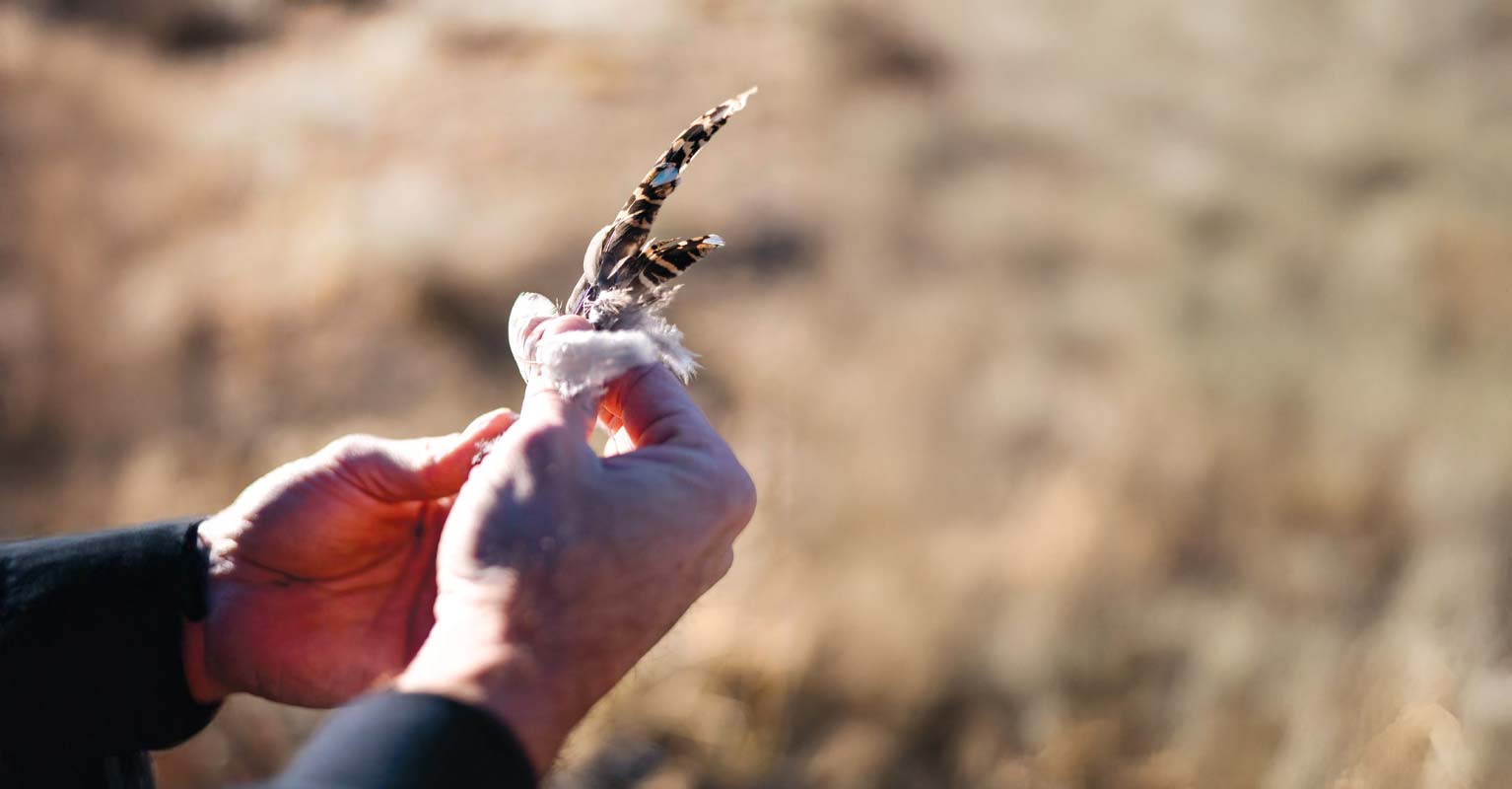Saving Water Through Nature-Inspired Landscaping
As springtime arrives and shoots of eager flowers and grasses seek sun, warmth, and water, snowpack melts, trickling into creeks and rushing rivers, turning our tawny valley into a verdant gem.
This vitality attracted the first farmers and ranchers who settled in the region. But long before the Bozeman Trail opened in 1863, this area was known by a different name: “The Valley of the Flowers,” given by the Crow, Blackfeet, Nez Perce, Shoshone, Flathead, and Sioux nations who traveled here to hunt, gather, fish, trade, and share stories. The valley’s richness was the result of a web of rivers, creeks, and ponds held together by a proliferation of beavers, resulting in productive soil that held moisture well into the dry season.
However, after almost two centuries of land-use change and a warming climate, the natural resource that once defined Gallatin Valley is inching closer and closer to scarcity. Large rivers slow to a trickle in the summer heat and farmers and ranchers suffer financial hardship when their water gets cut off during drought. More recently, the pressure on our water supply has ramped up driven by accelerated population growth, development, and more frequent drought, obligating our community to reckon with reality.
THE WATER SHORTAGE
For almost a decade, Jessica Ahlstrom has been managing the City of Bozeman Water Conservation Program, working alongside a team of hydrologists, meteorologists, and engineers to calculate how much time we have until our agricultural and residential demands exceed the water available.
“What we get in the winter is basically what we have all year during the hot and dry season, so our rivers aren’t very resilient when we have years of drought and low snowpack,” Ahlstrom says.
In October 2023 the City Commission approved a comprehensive Water Conservation Plan, outlining the realities of water use and providing pathways to implement programs and avoid the worst effects of water shortages.
By the City’s estimates, if the area sustains an annual population growth of 4 percent, the amount of water use per person remains the same, and mountains receive lower-than-average snowpack, growing demand might outstrip the water supply sometime between 2028 and 2033. While this may seem shockingly soon, variables like water consumption substantially depend on human behavior and whether we make meaningful changes to buy ourselves time.

A LAWN LEGACY
Lawns and landscapes consume 50 percent of our city’s treated water supply. Ahlstrom’s team has found that 85 percent of the greenspace around Bozeman homes is comprised of lawns. Consequently, this is exactly where Ahlstrom has focused her efforts.
The City provides education on water-wise lawn care, free sprinkler-system inspections, and resources on drought-tolerant landscaping. Rebates are also available for installing high-efficiency sprinkler heads, rain sensors, and native plants, and the City will pay homeowners for each square foot of lawn they replace.
While these measures have helped, the new Water Conservation Plan will expand opportunities to low-income residents and set water-wise standards for landscaping around new developments. On April 23, the City Commission will vote on whether to limit lawn in new developments to 35 percent of the area around single-family homes and 20 percent for apartment and commercial buildings. Commissioners will also consider new development standards for soil quality, sprinkler-system efficiency, and indoor water consumption. While these new restrictions may feel like a big change to the appearance of our community, they also provide an exciting opportunity to reimagine greenspaces.
For decades, a Kentucky bluegrass lawn has been the default landscape choice. This national trend rode on the coattails of harmful chemical herbicides and fertilizers invented in the mid-1900s that allowed homeowners everywhere to grow their very own monocrop of short, green grass. Manicured lawns grew into a symbol of status and cleanliness, but they used tremendous amounts of water and agrichemicals in the process— especially in the arid west.
However, this paradigm is shifting, inspiring a wellspring of creativity and innovation in how we use the land around our homes and businesses. Here, meet a few of the inspiring people who have tended plants, managed lawns, designed xeriscapes, and made it their life’s work to dig into the details.

LINDA IVERSON LANDSCAPE DESIGN
Linda Iverson has been designing landscapes in and around Bozeman for decades. When Iverson thinks about the area around a home, she emphasizes that these outdoor spaces should have a purpose: somewhere we want to spend time, grow food, add aesthetic interest, or provide habitat for other native species like birds and pollinators.
One area that Iverson sees poorly utilized is the front yard. “The backyard is where kids play, dogs run around, and people are hanging out … so the front yard is an area where we could use a lot less water by having drought-tolerant plants, raised beds, and eliminating lawns.”
Iverson is the mastermind behind numerous native-plant exhibitions around Bozeman, such as the water-wise garden in front of the Museum of the Rockies, the pollinator garden in Langhor Park, and a few native-plant medians around town.
Another example of Iverson’s work, the Cannery District boasts a wide variety of native plants, including bunch grasses, flowers, trees, and shrubs. Her team even installed six bioswales that gather and filter water from the parking lot through natural substrate and plants before storing it underground for use irrigating the landscape through the dry season.
VALLEY OF THE FLOWERS LANDSCAPING
Joining Iverson on the Cannery project were Jennifer and Jeremy Stark, who own and operate Valley of the Flowers Landscaping. While Iverson designed the Cannery project, Jennifer and Jeremy made it happen—putting plants and seeds in the ground and making sure they had everything they needed to thrive. The Starks are specialists in how to get native, drought-tolerant plants to establish. “If you want to see native grasses and shrubs, it will take a couple years but it will be worth it,” Jeremy says. “A water-wise landscape is less work because you aren’t fighting against nature.”
When seeking inspiration for a landscape project, the Starks suggest looking to the wild spaces around you to see what grows there. “My whole take on landscape design is using the right plant for the right place,” says Jeremy. “If you have a dry, windy, open site, you shouldn’t plant riparian plants like aspens and cottonwoods. Instead, consider planting juniper, silver buffalo berry, or sagebrush. … You could also have a natural water collection area, like a swale, and put water-loving plants there.”

ORGANIC LAWN CARE LLC
Growing up on a ranch in the Tom Miner Basin and recreating in whitewater kayaks, Ford Smith has gained an intimate understanding of water, runoff , and what it takes to grow healthy grass. After realizing how conventional lawn care has jeopardized our waterways, Smith took what he knew about growing grass to feed animals and applied it to growing healthy lawns.
Smith thinks about our lawns as “tiny ranches,” and has found a way to yield healthy, green, and resilient lawns while using less water and minimal chemicals. His secret is in the soil: nixing harmful chemicals and promoting a robust fungal and microbial food web that naturally cycles nutrients, so we don’t have to add it ourselves. When healthy soil is combined with infrequent, thorough watering and the grass isn’t cut too short, the result is a deep root system and rich soil that holds water like a sponge well into summer dry spells.
The catch is that Smith’s lawns may not look like the idyllic picture we’ve been sold—the grass is sometimes a bit more shaggy, and there may be a few unexpected plant guests taking root in the yard.
However, if we want to save water for the future, we need to let our developed spaces become a little bit more wild. That means allowing grass to grow a little longer, plants to go golden during the dry season, a few more dandelions and clover, and less homogeneity from one house to the next.
RESOURCES FROM OUR FRIENDS IN THE VALLEY
- Search “City of Bozeman Water Guide 2023” online to get tips on water-smart planting.
- Go to Bozeman.net/departments/utilities/water-conservation for more about the City’s rebate programs and to download Dropcountr, a water-use app.
- Visit Organiclawnmt.com for lawn-specific resources and information.
- At Bozeman.net/departments/utilities/water-conservation/ new-development-standards, learn about the April 23 City Commission vote to reconsider landscape and irrigation standards.




